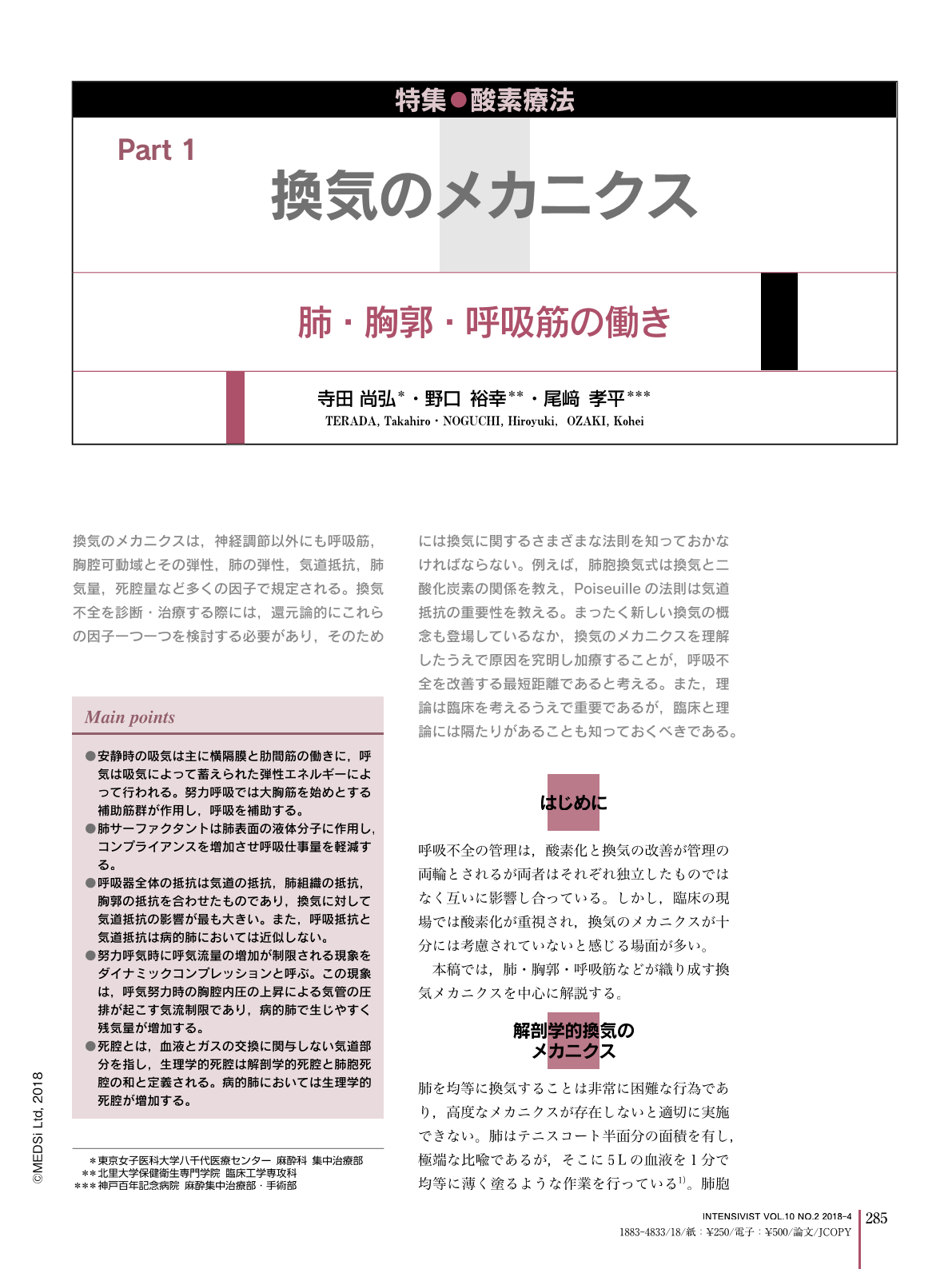Japanese
English
- 有料閲覧
- Abstract 文献概要
- 1ページ目 Look Inside
- 参考文献 Reference
換気のメカニクスは,神経調節以外にも呼吸筋,胸腔可動域とその弾性,肺の弾性,気道抵抗,肺気量,死腔量など多くの因子で規定される。換気不全を診断・治療する際には,還元論的にこれらの因子一つ一つを検討する必要があり,そのためには換気に関するさまざまな法則を知っておかなければならない。例えば,肺胞換気式は換気と二酸化炭素の関係を教え,Poiseuilleの法則は気道抵抗の重要性を教える。まったく新しい換気の概念も登場しているなか,換気のメカニクスを理解したうえで原因を究明し加療することが,呼吸不全を改善する最短距離であると考える。また,理論は臨床を考えるうえで重要であるが,臨床と理論には隔たりがあることも知っておくべきである。
Main points
●安静時の吸気は主に横隔膜と肋間筋の働きに,呼気は吸気によって蓄えられた弾性エネルギーによって行われる。努力呼吸では大胸筋を始めとする補助筋群が作用し,呼吸を補助する。
●肺サーファクタントは肺表面の液体分子に作用し,コンプライアンスを増加させ呼吸仕事量を軽減する。
●呼吸器全体の抵抗は気道の抵抗,肺組織の抵抗,胸郭の抵抗を合わせたものであり,換気に対して気道抵抗の影響が最も大きい。また,呼吸抵抗と気道抵抗は病的肺においては近似しない。
●努力呼気時に呼気流量の増加が制限される現象をダイナミックコンプレッションと呼ぶ。この現象は,呼気努力時の胸腔内圧の上昇による気管の圧排が起こす気流制限であり,病的肺で生じやすく残気量が増加する。
●死腔とは,血液とガスの交換に関与しない気道部分を指し,生理学的死腔は解剖学的死腔と肺胞死腔の和と定義される。病的肺においては生理学的死腔が増加する。
Various mechanisms are involved in ventilation:neuromodulation;respiratory muscle activity;range of motion and elasticity of the thoracic cavity;and airway resistance, elasticity, lung volume, and dead space of the lungs. A thorough investigation of individual mechanisms while understanding the principles of ventilation is needed for the diagnosis and treatment of ventilatory failure. For instance, the alveolar ventilation equation describes the relationship between ventilation and carbon dioxide production, while Poiseuille's law describes the importance of airway resistance. For the management of patients with respiratory failure, understanding pathophysiology and the basis of ventilatory mechanics, including new concepts of ventilation, is essential. Although we have to understand the theories behind the clinical phenomena, we should be aware of the gap between clinical practice and theory.

Copyright © 2018, MEDICAL SCIENCES INTERNATIONAL, LTD. All rights reserved.


